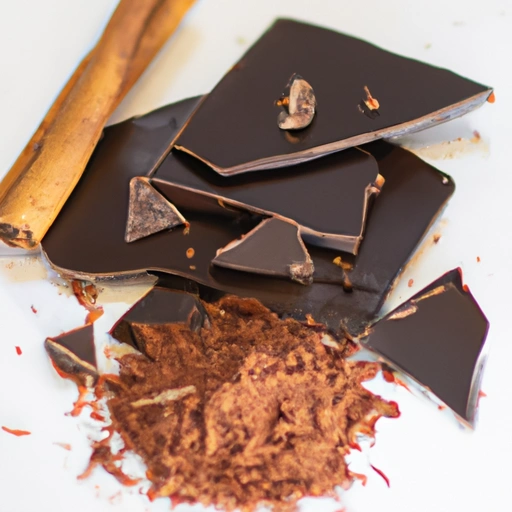Mexican Chocolate
Description

Mexican chocolate is a unique variety of chocolate that is distinctly different from other types of chocolate found around the world. This ingredient is known for its grainy texture and rich, spicy flavor profile that often includes cinnamon, nutmeg, and even a hint of chili pepper. Unlike most European chocolates which tend to be smooth and refined, Mexican chocolate is rustic with a robust taste that reflects its artisanal origins. It's commonly available in round discs or bars and is traditionally used in both sweet and savory recipes.
Common uses
Mexican chocolate is predominantly used in beverages such as the traditional Mexican 'hot chocolate' and in 'mole,' a classic Mexican sauce paired with meats. Its usage, however, has spread globally, finding its place in various desserts and even savory dishes seeking a depth of flavor that only chocolate can provide.
Nutritional value
Calories
A standard 1-ounce (28 grams) serving of Mexican chocolate contains approximately 140 to 150 calories.
Protein
Mexican chocolate contains about 1 to 2 grams of protein per ounce (28 grams).
Fat
There are about 8 to 10 grams of fat in a 1-ounce (28 grams) serving of Mexican chocolate, mostly saturated fat due to cocoa butter content.
Carbohydrates
Carbohydrates in a 1-ounce (28 grams) serving of Mexican chocolate range from 15 to 20 grams, which includes sugars and dietary fiber.
Vitamins
Mexican chocolate may contain small amounts of vitamins such as B-vitamins depending on the product.
Minerals
It is a good source of minerals like magnesium, potassium, and iron which are found naturally in the cacao.
Health benefits
Mexican chocolate, like other types of dark chocolate, may offer health benefits when consumed in moderation. These benefits include potential improvements in heart health, due to the presence of flavonoids that can help lower blood pressure and improve blood flow to the heart and brain. Additionally, the antioxidants found in cacao can reduce inflammation and improve cholesterol levels.
Potential risks
Despite its health benefits, Mexican chocolate should be consumed in moderation due to its high sugar and fat content, which can contribute to weight gain and other health issues if consumed in excess. Additionally, some individuals may be sensitive to caffeine and theobromine present in chocolate.
Common recipes
Popular Mexican chocolate recipes include 'chocolate caliente,' a traditional hot chocolate, 'mole poblano,' a rich sauce often served with turkey or chicken, and various desserts like 'churros' dipped in Mexican chocolate sauce.
Cooking methods
Mexican chocolate can be melted or grated into recipes, and it's often combined with liquids to make sauces or beverages.
Pairing with other ingredients
Its distinctive flavor pairs well with spices like cinnamon and chili, as well as with fruits like strawberries and bananas. It also complements the flavors of nuts, coffee, and vanilla.
Summary
Mexican chocolate is an integral ingredient in both the history and contemporary cuisine of Mexico. Its unique flavor profile, which includes a blend of spices and a less processed, grainier texture, sets it apart from other chocolates. Delectable in both sweet and savory dishes, Mexican chocolate offers a taste experience that links the past to present culinary innovation. When using Mexican chocolate in recipes, it's essential to consider its bold flavors and nutritional content, appreciating it both for its cultural significance and delightful taste.